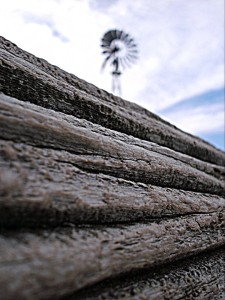***This article is not a substitute for the advice of an attorney.***
Today we will continue on in our Texas Water series by looking at the law applicable to Texas groundwater. Be sure to check out the prior posts on Texas surface water law and on current issues in Texas surface water if you missed them.
What is groundwater?
Groundwater is defined as “water percolating below the surface of the earth” but not including subterranean streams or rivers. (Note: Like above ground rivers, subterranean rivers in Texas would be state-0wned. To date, however, no subterranean river has been identified in Texas and, thus, at least until this type of river is identified, all underground water is treated as percolating.)
Most underground water is held in aquifers. The nine major aquifers hold 97% of the groundwater in Texas are: Ogallala, Gulf Coast, Edwards, Carrizo-Wilcox, Trinity, Edwards-Trinity, Seymour, Hueco-Mesilla, Bloson, and Cenozoic Pecos Alluvium.

How Is Groundwater Used?
Of the 17 million acre-feet of water used by Texans each year, 60% (approximately 10.2 million acre-feet) is groundwater.
Of the groundwater used, 80% (approximately 8.16 million acre-feet) of the water is used for agricultural irrigation for approximately 6.3 million acres of irrigated agricultural land.
Another 15% (1.53 million acre-feet) is used by municipalities.
Who Owns the Groundwater?
Landowners in Texas own the water beneath their property. See Texas Water Code Section 36.002. Moreover, recent case law makes clear that a landowner owns not only the water that emerges from the ground, but the water in place underground as well. When water is taken, or even in some cases where regulations limit the ability to pump groundwater, a landowner may be able to assert a takings claim because he or she is deprived of his or her property right in the water underlying the land. This is in sharp contrast to surface water, which is owned by the State of Texas in trust for the public and may only be used after a permit is obtained.
What Is The Rule of Capture?
Groundwater in Texas is governed by the legal doctrine known as the Rule of Capture. The Rule of Capture essentially provides that because a landowner also owns the water beneath his property, the landowner has the right to pump as much water as he wishes even at the expense of his neighbor. Under the Rule of Capture, a landowner needs no permit to drill a well and pump groundwater, and he may pump as much water as he may beneficially use even if that causes his neighbor’s well to go dry. He may also sell the water withdrawn from the ground for use at any location. What is the remedy for a neighbor who worried about his well going dry? Drill a bigger/deeper well. In light of this, many refer to Texas groundwater law as the “law of the biggest pump.”
Texas first adopted this law in 1904 in Houston & Texas Central Railway Co. v. East. In that case, Mr. East owned a shallow well on his property. The railroad drilled a larger, deeper well on its neighboring property, which pumped so much water that it caused Mr. East’s well to go dry. Mr. East sued, but the Texas Supreme Court found in favor of the railroad company. The court held that under Texas groundwater law, a person who owns the land may drill a well and use the water from that well, even if such uses cause his neighbor’s well to go dry.
Are there any limits on the Rule of Capture?
Yes. Not surprisingly, there are various limits on the Rule of Capture. Although a landowner owns the water beneath his or her property, this does not give the landowner the right to capture a specific amount of groundwater, nor does it allow the landowner to commit acts thath result in waste or subsidence. See Texas Water Code Section 36.002 The limitations fall into two categories: (1) common law exceptions and (2) Legislative exceptions.
Common Law Exceptions: There are five common law exceptions to the Rule of Capture that limit a landowner’s right to pump groundwater. First, a landowner may not “maliciously take water for the sole purpose of injuring his neighbor.” Second, a landowner may not “wantonly and willfully waste” groundwater. Third, a landowner may not negligently drill or pump from a well in a manner that causes subsidence on his neighbor’s property. Fourth, a landowner may not pump from a contaminated well. Finally, a landowner my not trespass onto another’s land in order to pump groundwater. If a landowner’s pumping falls within one of these exceptions, he is not protected by the Rule of Capture and may be required to cease pumping or be liable for damages. (Three of these exceptions were essentially codified in 2011 and are now part of the Texas Water Code. Under the statute, a landowner may not “cause waste, cause malicious drainage, or negligently cause subsidence.”) See Texas Water Code Section 36.002.
Legislative Exceptions: Due to a Constitutional Amendment in 1917 known as the Conservation Amendment, the Texas Legislature has the duty to preserve and conserve all of Texas’ natural resources. This includes the power to regulate the drilling and pumping of groundwater. The Legislature decided that the “preferred method of groundwater management” in Texas is through local Groundwater Conservation Districts. See Texas Water Code Section 36.0015. These GCDs are able to enact rules and regulations, including requiring permits, metering, and limitations on the amount of water that may be withdrawn in their area. See Texas Water Code Section 36.0015. Much of the groundwater in Texas falls under the authority of a GCD. GCDs will be the topic of a forthcoming blog post.
Upcoming Blog Posts in Texas Water Series
In the coming weeks, blog posts will address: (1) Groundwater Conservation Districts in Texas, including their purpose, method of creation, rule surrounding their meetings and actions, and wells and areas exempt from their reach; and (2) Current issues in groundwater law.














